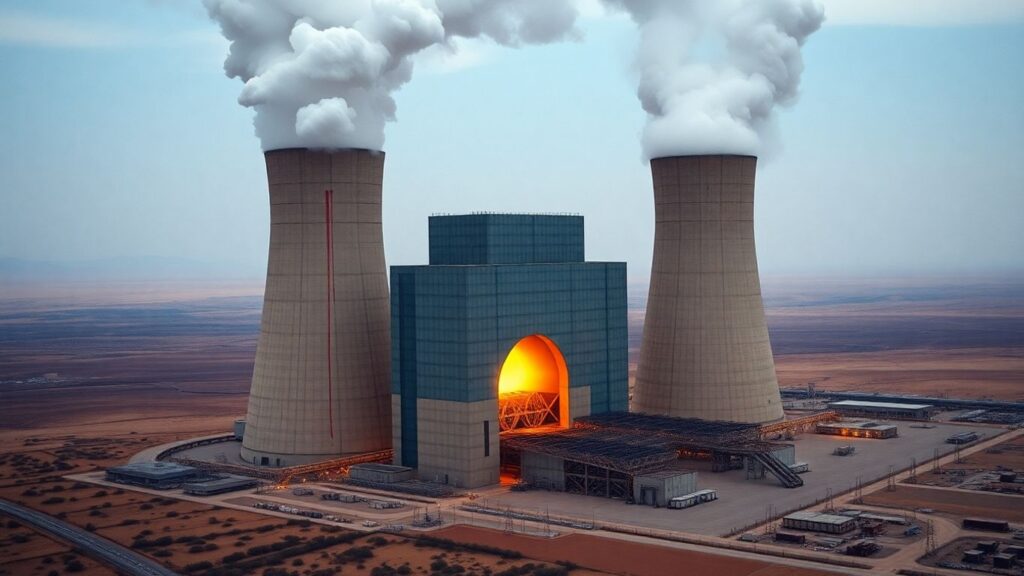Ontario is making history by becoming the first in the G7 to construct a small modular reactor (SMR), signaling a significant commitment to nuclear energy as a cornerstone of its future power supply. This move is part of a broader strategy to meet soaring electricity demands driven by electrification and industrial growth.
Key Takeaways
- Ontario is set to become the first G7 nation to build a small modular reactor (SMR).
- The province plans a substantial expansion of nuclear power to meet doubling electricity demand over the next 25 years.
- This expansion is crucial for supporting the transition to electric vehicles and reducing industrial carbon emissions.
- The government aims for an emissions-free electricity grid by 2050, with nuclear power playing a central role.
A Bold Step Towards Clean Energy
Ontario is forging ahead with the development of the first small modular reactor (SMR) in the G7. This initiative is a key component of the province’s ambitious plan to significantly increase its electricity generation capacity. The move underscores Ontario’s commitment to a clean energy future, aiming to meet a projected doubling of electricity demand within the next 25 years.
Powering Future Growth
The surge in electricity demand is largely attributed to the automotive sector’s shift towards electric vehicles and the broader push for industries to decarbonize. To address this, Ontario is pursuing a multi-decade expansion of its nuclear power infrastructure. This includes plans to nearly double production at the Bruce Power facility, already the world’s largest nuclear generating station. Additionally, three more SMRs are planned for the Darlington site, which, along with the initial SMR, will collectively power 1.2 million homes.
Nuclear’s Central Role in Ontario’s Energy Strategy
Energy Minister Todd Smith emphasized that expanding nuclear production is essential for meeting the province’s clean energy goals. "We’ve proven that it’s reliable 365 days a year, seven days a week and 24 hours a day," Smith stated, highlighting nuclear power’s consistent baseload capacity. The province is also evaluating the refurbishment of the Pickering Nuclear Generating Station, Canada’s oldest operating nuclear plant, to extend its lifespan.
National Support and Economic Implications
Prime Minister Justin Trudeau has expressed support for increased nuclear power generation across Canada, recognizing its importance for clean electricity and industrial expansion. The federal government is offering investment tax credits for emissions-free electricity systems, including nuclear. Ontario’s existing nuclear fleet, which provides over half of the province’s electricity, is credited with attracting major automotive investments like those from Volkswagen and Stellantis.
Future Investments and Considerations
Ontario’s Independent Electricity System Operator (IESO) estimates that the province will need to invest approximately $400 billion by 2050 to meet future electricity needs and achieve a carbon-neutral grid. This includes building significant new nuclear capacity. While the government champions nuclear power for its reliability and low emissions, some experts raise concerns about the high costs and long-term commitment associated with nuclear projects, advocating for a more diverse approach to energy alternatives.
The Path Forward
The next critical decision point for Ontario’s nuclear future involves the potential refurbishment of four reactor units at the Pickering plant. Ontario Power Generation (OPG) has submitted a feasibility study for this project, building on the expertise gained from the ongoing refurbishment of reactors at the Darlington site. This period is being described as a "nuclear renaissance," marking a significant shift from previous discussions about plant closures.
Sources
- Ontario Newsroom, Ontario Newsroom.
- Ontario prepares to go big on nuclear, with demand for electricity poised to soar, CBC.












